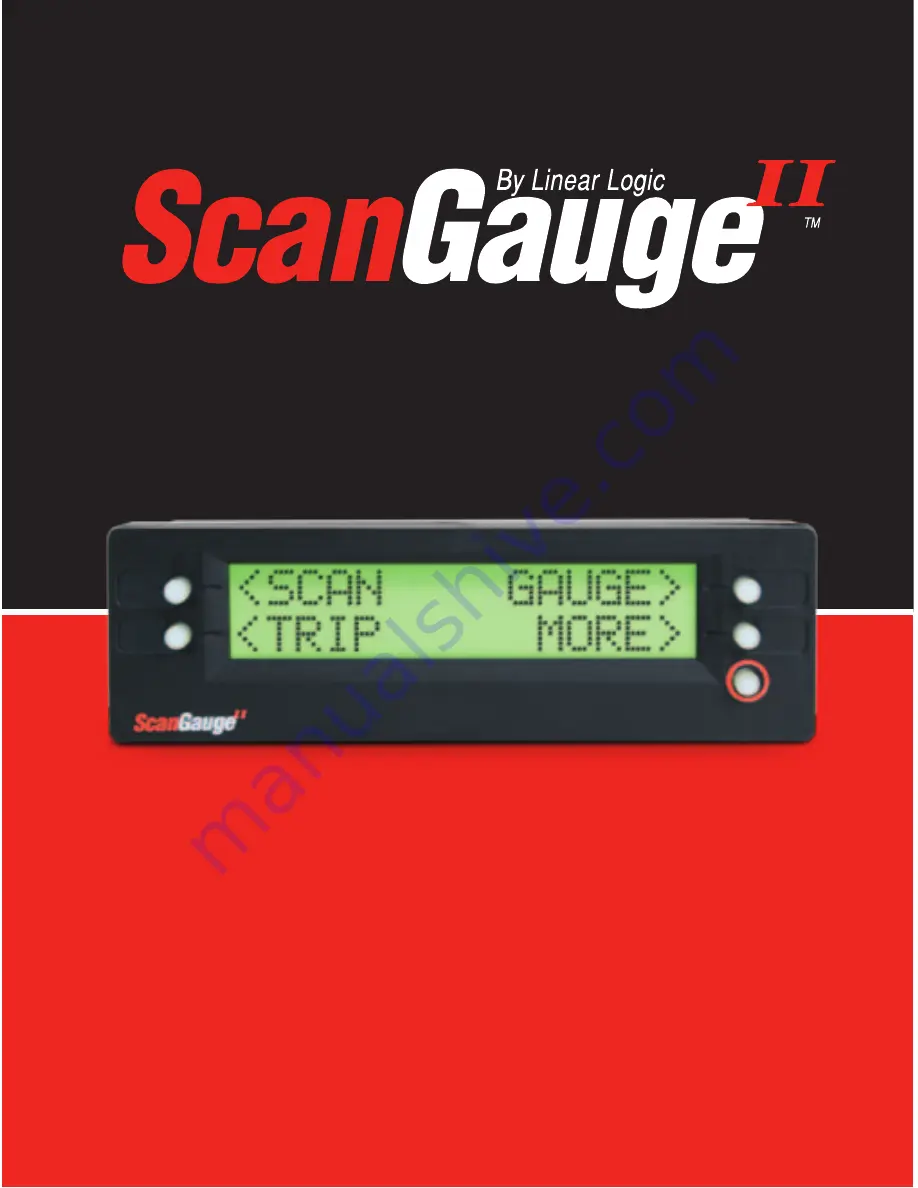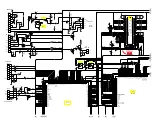
www.ScanGauge.com
SGIIQS601
4) Calibrating Your ScanGauge
5) Learn How to Save Fuel With ScanGauge
The accuracy of your ScanGauge can be improved
by calibrating the fuel consumption. Calibrating your
ScanGauge to accurately report fuel consumption is a
2-step process; Your
First Fill-Up,
Your
Second Fill-Up
.
For more detail information about calibrating your fuel
consumption as well as how to calibrate your ScanGauge
to your vehicle’s speed, please refer to the ScanGauge
User Manual or go online to www.scangauge.com/support.
The easiest way to learn to improve your fuel economy is to have real-time feedback about
how your driving style effects overall fuel use. ScanGauge can provide both Miles Per Gallon
(MPG) as well as Average Fuel Economy (AVG) in real-time to help you adjust your driving
style to reach maximum fuel economy.
Start Learning to Save Fuel!
With your gauges set, your ScanGauge is now ready to provide real-time feedback about your
fuel usage as you drive. This will allow you to see what adjustments in your driving style can
be made to actually raise or lower your
Average Fuel Economy (AVG)
.
Your goal is to bring up your
AVG
reading as high as possible. To do this,
try and adjust your driving style so that
your Miles Per Gallon (MPG) reading is
equal to or higher than your AVG. You
can also use the
Gallons/Liters Per
Hour (GPH/LPH)
to gauge how much fuel your vehicle will use each hour of driving. The
Trip
Fuel Cost (TFC)
gauge will show you the total cost of the fuel used. You can think of the
TFC
gauge as a taxi meter.
Using these real-time gauges, you can experiment with different driving styles, or even different
driving routes, to reduce your fuel cost.
After following the initial calibration
procedure, you should follow Step 2
for each subsequent fill up.
If you miss a full up procedure after
filling your tank, start with Step 1 of
the calibration process on your next
fill up to maintain accuracy .
Set Your Gauges
Use the function buttons next to each gauge
position to select the following gauges:
AVG
Average Fuel Economy
MPG
Mile Per Gallon
GPH/LPH
Gallons/Liters Per Hour
TFC
Trip Fuel Cost
1) Fill up the tank, letting the pump shut off
automatically.
2) Use the FILLUP function to tell ScanGauge
you have filled the tank. From the Home
Screen, follow the sequence shown to the
right.
3) On your first fill-up, DO NOT make any
adjustments to the indicated fuel. Simply
press the lower right button to move to
the next screen.
4) Next, the Fuel Cost Screen will appear. Use
the upper left and right function buttons to
adjust the cost per gallon/liter, and press the
lower right function button next to SAVE.
5) Keep the ScanGauge connected to your
vehicle and use the vehicle normally.
6) Once you reach approximately 1/4 tank of
fuel left, follow the directions in Step 2.
Step 1
- Your First Fill-up
1) When the tank is around 1/4 full
, fill up your
tank again. Be sure to let the pump shut off
automatically
2) Use the FILLUP function to tell ScanGauge
you have filled the tank. From the Home
Screen, follow the sequence shown to the left.
3) The next screen will show the amount of fuel
your ScanGauge believes was used since
the previous fill-up.
Use the upper left and
right function buttons (A,C) to adjust the
amount of fuel you actually put in the tank.
4) Push the lower right function button to save
the value and complete the fill-up process.
5) Next, the Fuel Cost screen will appear. Enter
the cost per gallon/liter and press the SAVE
button.
Step 2
- Your Second Fill-up and Subsequent Fill-ups
•
When filling the tank on your second fill-up,
try to use the same pump you used for your
first fill-up with the vehicle pointed in the
same direction. If you fill up your fuel tank
with your vehicle on an incline, it can have
an effect on the amount of fuel the pump
can dispense into your tank.
•
When filling your tank, let the pump shut off
automatically. Do not top off.
•
To maintain accurate “TO EMPTY” informa-
tion in the ScanGauge’s trip computers,
you should always fill your tank to capacity
and follow the FILLUP sequence in Step 2.
•
Once you have completed your second
fill-up, subsequent fill-ups may not require
adjusting the gallons/liters before pressing
DONE.
<SCAN
<TRIP
GAUGE>
MORE>
<SETUP
<DISPLAY
MORE>
FILLUP>
0.0%
<
DONE>
0.1 GALLONS >
Fuel Cost
<
SAVE>
>
$3.00
Home Screen
Once you have set the fuel
cost, press SAVE
<SCAN
<TRIP
GAUGE>
MORE>
<SETUP
<DISPLAY
MORE>
FILLUP>
0.0%
<
DONE>
14.3 GALLONS >
Fuel Cost
<
SAVE>
>
$3.00
Home Screen
Once you have set the fuel
cost, press SAVE.
Push the function buttons to
cycle through the available Digital Gauges.
<SCAN
<TRIP
GAUGE>
MORE>
20.5AVG
1.2GPH
9.20TFC
25.2MPG
Home Screen
20.5AVG
1.2GPH
9.20TFC
25.2MPG
20.5AVG
1.2GPH
9.20TFC
25.2MPG
Helpful Hints
Quick Start Guide
Plugs into the diagnostic connector already
built into all 1996 or newer cars and light trucks.


























